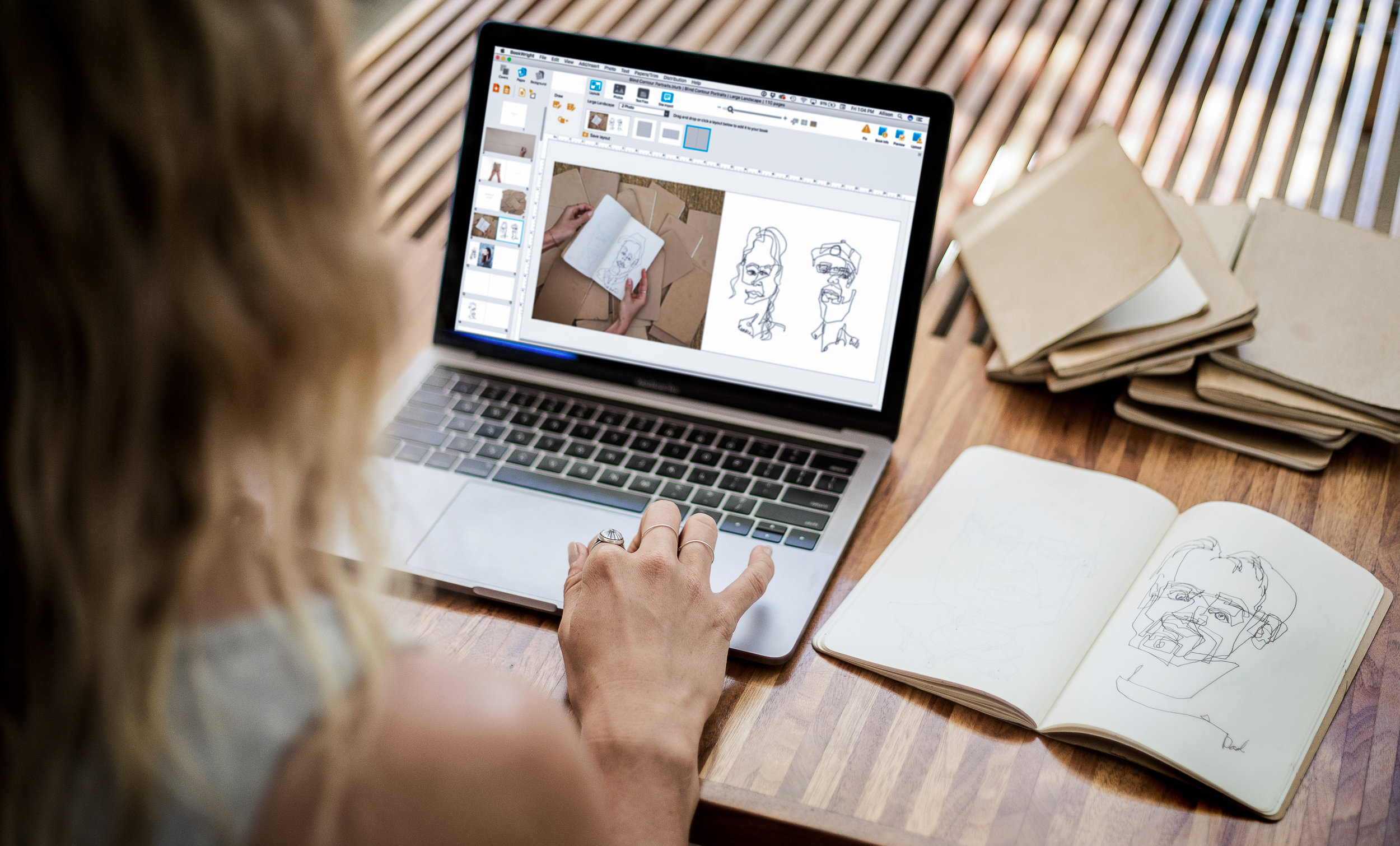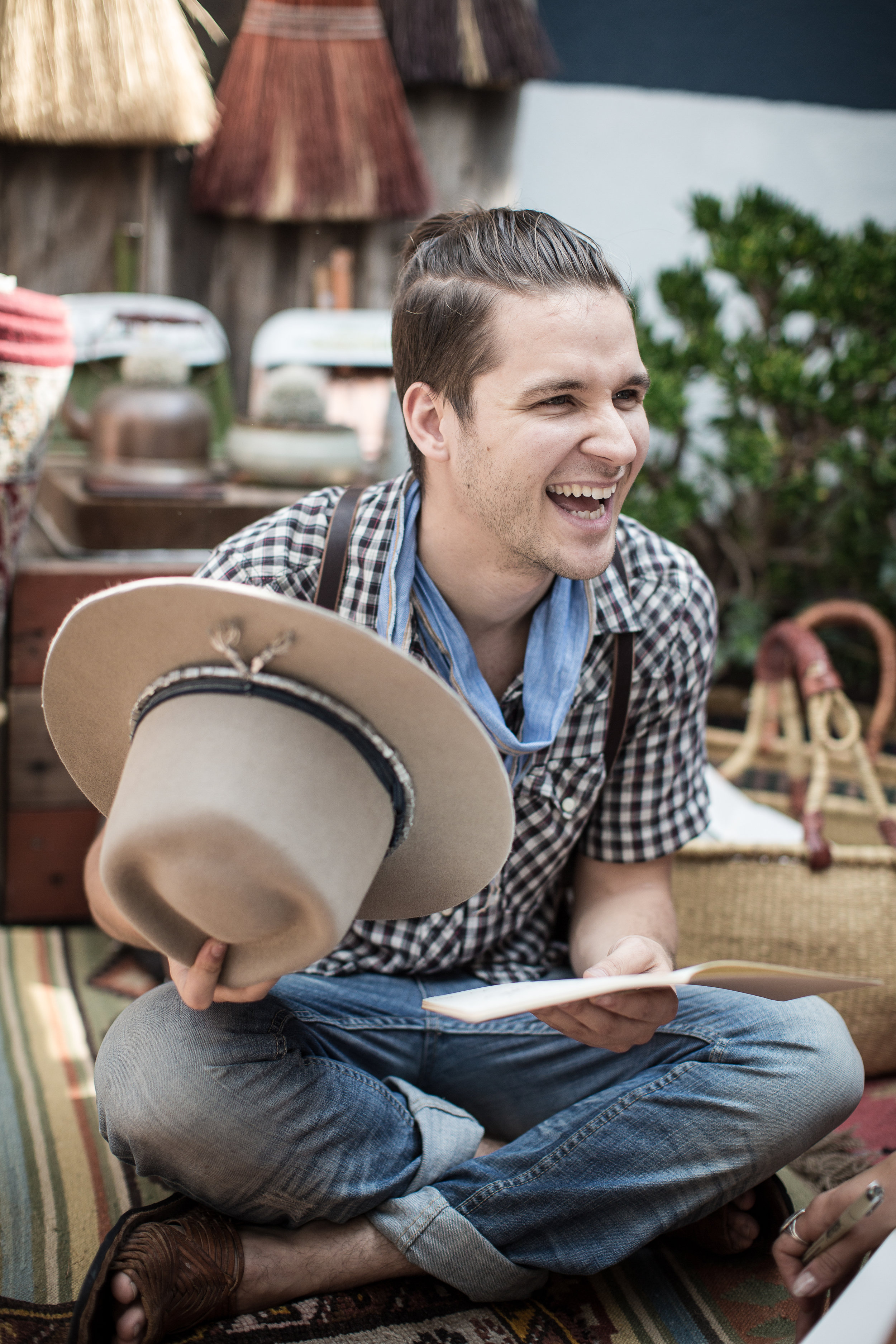SEEING without LOOKING
seven years of blind contour portraits
10.13.2017
Special thanks to Blurb for encouraging this project and sponsoring an opportunity to dig into my process in a new way.
Control plays a massive role in my life. When harnessed positively, it can be my best friend. It helps me vision and stay prepared, it directs important decisions, and it aids me in creating opportunities for myself and others. It's also a big part of what enables me as an artist, playing a role in curation and intentionality.
But on the flip side, control is a rigid container that narrows my vision, forms unreasonable expectations, and takes me completely out of the creative process by focusing too heavily on results. The more I work with control in my personal life, the more I experiment with the concept in my work.
A couple years ago I found myself in the middle of a serious creative drought. I was bored of my work, feeling creatively insecure, and questioning if I even had any business creating art. It was pretty obvious that I needed to make a change, but for months I was paralyzed by the unknown. I couldn't see what my next step would be, and after a number of years of making art that was formulaic, I felt lost without that sense of certainty.
During that time, some of the only art I managed to make were Blind Contour portraits scribbled inside notebooks - a habit started when I first moved to LA to work as a graphic designer. The portraits are drawn with one continuous line, without looking down at the page. That practice of letting go of the results and appreciating the 'mistakes' was the process that ended up guiding me out of my funk.
When Blurb Books asked me to make a book to share part of my creative process, I knew it was a perfect way to honor the sketchbooks that taught me to embrace the experimental and the messy. Blurb is a self-publishing platform that lets you to create (and sell) your own books, and their new Layflat format was perfect for an art book like this, giving me seamless, edge to edge printing.
I had been dreaming of pulling seven years’ worth of portraits into one place, but sifting through twenty-two Moleskine notebooks was a pretty daunting task to consider. Luckily, Blurb's own BookWright software (a bookmaking / layout tool) made the process of designing my Layflat book super simple. They also offer an InDesign plug in, if you want a little more flexibility.
As I thumbed through hundreds of portraits I remembered exactly what it felt like to draw my first Blind Contour portraits as a kid. I recalled the strange type of anxiety that filled my arm and pooled at the tip of the pen hovering just above the empty page, waiting to make my first clumsy marks. Disoriented and even aimless at times, I had to ignore the fact that I was confused in order to keep going. Tension gave way to levity when I noticed my twisted face and furrowed brow. I relaxed and a sense of play showed up. Discomfort turned to curiosity. When I looked down at what I had blindly created, the joy of being surprised by what I had made topped every feeling of satisfaction that often follows the creation of pieces that had been controlled every step of the way.

The process of creating my book 'Seeing Without Looking' helped me appreciate the dance with control on both sides of the coin. I got to really appreciate how important surrender and curiosity are in my creative process. And when my book arrived in the mail, all 110 double-thick pages of full-bleed beauty, I was grateful for every tiny detail I got to tweak to make it just right.
Got any book projects in the back of your mind?












